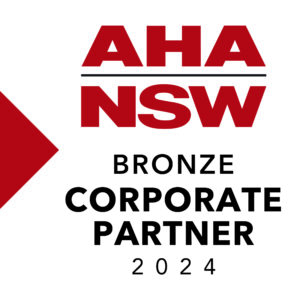As hospitality venues continue to struggle with limited resources, and we head into the busy summer months, it’s never been more important to roster wisely. Maximising the use of resources while satisfying customer demand is an area our team of Customer Success Managers focus on with our clients.
Using our industry experience, oversight across our client’s hospitality venues, and via our exclusive technology, Salesline we are able to streamline labour costs, without impacting your service delivery.
In this post, we are sharing five key areas you can review in your current process to drive efficiency and unlock potential in your existing staffing.
1. Start fresh, don’t copy mistakes from last week
Often people assume the same labour is needed from week to week, but of course, trading conditions vary. So, rostering requires a much more mindful approach to match the anticipated sale volume with labour.
To make your roster more efficient, avoid copying mistakes from last week. Use the opportunity to start the new week with a fresh roster. The Salesline screenshot below shows the active staff (blue) versus sales (orange) on the last several Mondays. As you can see, by copying the same labour week-to-week, there was over-rostering on 3 of the 5 weeks.

2. Stagger shift times to align with changes in trade
Typically we see start times are the same for everyone and most commonly include starting on the hour. But, by building up in 15-minute increments and staggering the start times of staff you’ll be able to more effectively cover the ramp up and down of trade whilst saving on the associated salary.
Using Salesline in the example below, several team members all started at 10 am, yet trade didn’t start to build until 11.30. By staggering the start times it would have better reflected the growth in sales and, in doing so, saved on wages over that period.
The same is true for the end of the day where trade slowed down faster than the shifts ended. This produced a period at the end of the day when the venues were overstaffed.

3. Set a ‘revenue efficiency per hour’ target for each day
Efficiency can be measured in many ways, but by dividing your sales by the hours worked, you’re able to get a metric of efficiency that you can compare that isn’t influenced by other factors.
The nature of the hospitality industry means that certain days are busier than others, with each day delivering different levels of efficiency. That’s why having a target per day will give you something to strive for when rostering and reviewing.
The below example shows data from Salesline where you can see the average efficiency for the week in orange, and the variance of efficiency by day in blue. So, if you were to use the weekly average you can see you would be over-rostered on some days and under-rostered on others.

4. The right people, in the right spot, at the right time
You already know that hospitality is best achieved through excellence in service, so rostering goes beyond the first step of just matching the right number of people to meet demand. The real differentiator is all about knowing who is working and their skills so you can strategically place them throughout the venue.
Some time and attendance systems can help here by leveraging the training (or qualifications) section of an employee profile and capturing their skills. This can then be used to ensure a spread of skills in the venue when rostering.
Quantaco can help further develop an individual’s skills through the learning modules which come included in Star Comply, our 3-in-1 application for incident management, checklist management and learning and development.

5. Review and avoid penalties
The complexity of the awards in hospitality can make it a challenge to know when you are likely to incur penalties through rostering. However, a few simple steps could help avoid expensive actions. The AHA provides members with guidance and updates so accessing their library of information will help you to remain current on Fairwork legislation.
For example, delayed meal breaks can become costly and, in some circumstances it can be as high as 50% of their ordinary rate. Scheduling meal breaks in a roster is one simple way to try and avoid this.
Stress profiles are also available in some time and attendance systems. By setting agreement parameters for certain staff you’ll get a warning when rostering if you breach them. This helps to avoid penalties before they happen.

Not many people realise the options available to them when it comes to making rostering efficient.
At Quantaco, our Customer Success Managers can jump on board and help you unlock the potential in your rosters and other areas of your hospitality business. If you want to implement this and more, get in touch here: https://www.quantaco.co/




